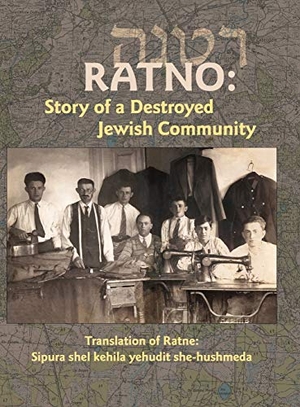Für statistische Zwecke und um bestmögliche Funktionalität zu bieten, speichert diese Website Cookies auf Ihrem Gerät. Das Speichern von Cookies kann in den Browser-Einstellungen deaktiviert werden. Wenn Sie die Website weiter nutzen, stimmen Sie der Verwendung von Cookies zu.
Cookie akzeptieren
Translation of Ratno Yizkor Book
- JewishGen, Inc.
- 2020
- Gebunden
- 592 Seiten
- ISBN 9781939561893
This is the translation of Ratno, Ukraine Yizkor Book; The Story of the Destroyed Jewish Community; The marshy garrison town of Ratno-Which at different times would be part of Lithuania, Poland, and Ukraine-began on the banks of the Pripyat River in the 14th century. Jewish presence there grew from about 12 families in 1565 to 1,554 people, or 64.5% of the population, in 1921. Jews were active in the town's civic life; some became city council members. Jews made their living as tailors, seamstresses, shoemakers, furniture makers, millers, manufacturers, builders and carpenters. In the 1920s, Ratno boasted a famous synagogue, several cheders, including one for girls; a Tarbut school of 200 students, a library with a drama club, two competing Zionist youth groups, and a chapter of the Women's International Zionist Organization. On June 28, 1941 the German Wehrmacht occupied the town. With the Ukrainian auxiliary police, they began a reign of anti-Jewish measures and killings. In spring 1942 the Germans established a ghetto, forcing
Mehr
Weniger
zzgl. Versand
in Kürze